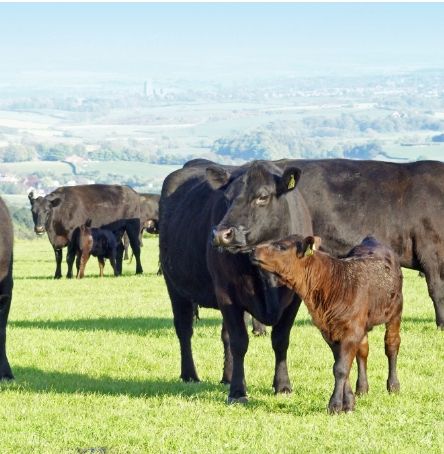10th Feb
Jane Gray

Some of the 6 bulls are in the shed, others are outside as are most of the pregnant cows. Aberdeen Angus grow thick hairy coats in the winter, so it’s more the need to keep stock from damaging the wetter pastureland that brings them inside. The muck we gain from housing is a useful organic by-product of this and we are mucking out the sheds after the Christmas break this week, although with one tractor broken it’s taking rather a long time. The muck is stored in the field in large mounds which are turned and heaped up regularly to ensure they produce quality organic compost. Cows are pregnant for 9 months and are starting to look in calf. Martin is busy checking them and feeding them every morning, an early bird he’s always the first to arrive on the farm.
We scanned the B flock before New Year, with the Aberdale ewe trial suggesting that these ewes might help lift our lamb percentages. The weather at tupping time was rather wet and muddy, you’d think that this would influence the results but the Aberdale gimmers scanned at an amazing (for us) 285%. The main A flock scanned this month ans results were OK – but the ewe lambs were disappointing. The ewes have all been winter shorn, ideally this should be done a good 6 weeks before lambing. The market for organic wool is growing and we will receive a small organic premium which is good news.
Most of the 2019 lamb crop has been sold, with just enough lambs left to supply the farm shop. Other jobs for the time of year include fencing, coppicing and planting new hedges and trees.